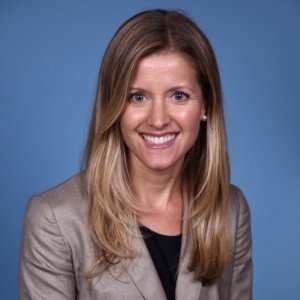The M7 Business Schools: A Comprehensive Guide

If applying to business school is on your radar (or perhaps you’re already in the process of doing so), you’ve likely come across the somewhat mysterious term ‘M7’. What is this exactly, you may wonder. Generally speaking, the M7 business schools are the US programs that are considered the most well-regarded and to which gaining acceptance is the most competitive. The M7 business schools consist of: Harvard Business School, Stanford Graduate School of Business, Wharton, Columbia Business School, Chicago Booth, Kellogg School of Management, and MIT Sloan.
Attending any of these schools, you can expect a top-notch business education and robust career opportunities. However, that doesn’t mean the experience you would have at each of them is the same – in fact, that’s far from the case. They vary greatly in many regards, including class size, teaching style, culture, and curricular emphasis.
So, how do you distinguish between the M7 business schools and determine which ones should be on your list of target programs? You need to do your own research – visit if you can, talk to current students/alums, etc. – but, to get you started, we’re sharing our thoughts on what makes each program unique.
Harvard Business School
Famous for its case method teaching format, HBS has one of the largest class sizes of the M7 business schools. However, you may not realize that as a student because for most of your first year, you’ll spend every day with your section of 90 soon-to-be closest friends. Be ready to be cold called in class, where you will be expected to articulately argue your point (or counter point). The case method is most effective when you bring your expertise to the table to teach your fellow classmates and they do the same for you.
- Class size: 938
- Average GMAT: 740
- Average GPA: 3.73
- Acceptance Rate: 14%
Stanford Graduate School of Business
The GSB has a strong reputation for entrepreneurship, technology, and social impact. In a recent report by Poets & Quants, nearly 25% of the top 100 MBA start-ups came out of Stanford! With a notoriously low acceptance rate, relatively small MBA class, and a strong focus on its motto of “Change lives. Change organizations. Change the world.”, Stanford is arguably the toughest school to get into (even compared to its M7 business school peers).
- Class size: 431
- Average GMAT: 738
- Average GPA: 3.8
- Acceptance Rate: 9%
Wharton
Wharton is the oldest business school in the country and is consistently ranked one of the top three US MBA programs. Although it is historically known for its deep expertise in finance (private equity, banking, you name it), it also offers a consistently top-ranked real estate program, as well as a top-notch healthcare program and a strong focus on leadership development. Located in Philadelphia, it has one of the largest class sizes of the M7 business schools and achieved gender parity in 2022, when 52% of its incoming class were women.
- Class size: 874
- Average GMAT: 728
- Average GPA: 3.6
- Acceptance Rate: 23%
Columbia Business School
Columbia Business School sits on a newly built campus in New York City. The curriculum combines classroom learning with real-world experiences that New York has to offer, including in-semester internships and Master Classes working with local companies (who happen to be some of the largest in the world!). CBS students tend to be a blend of people who previously lived in NYC and are keeping their same apartments and friends and fresh New Yorkers who are living in the city for the first time. Be sure to visit before applying if you can!
- Class size: 900
- Average GMAT: 730
- Average GPA: 3.5
- Acceptance Rate: 20%
Chicago Booth
Booth is famously the most flexible of the M7 business schools. Without a rigid, mandatory core curriculum, students can design their own experience while living in the heart of Chicago. Booth students are intellectually curious and thrive in ambiguity. Booth historically values a high level of quantitative excellence but it’s not just a “quant school” – Boothies go into a wide variety of industries around the world.
- Class size: 637
- Average GMAT: 730
- Average GPA: 3.6
- Acceptance Rate: 30%
Northwestern Kellogg
Kellogg, nestled in Evanston (about 30 mins north of downtown Chicago), is best known for being a highly collaborative, collegial culture. Most students live within a mile radius of the building, called the Global Hub. Historically, Kellogg students have flocked to the top consulting firms but the big tech firms (think Amazon, Google etc.) heavily recruit there as well as the school has started to incorporate more data science into the curriculum.
- Class size: 529
- Average GMAT: 731
- Average GPA: 3.7
- Acceptance Rate: 30%
MIT Sloan
Sloan’s curriculum is based on Action Learning, which is “learning by doing”. Students get a blend of classroom instruction and real-world experience outside of the textbooks and cases. With its location in Boston, one of the largest tech hubs in the US (outside of Silicon Valley), you can expect that many of your classmates will be there with entrepreneurship and/or tech goals!
- Class size: 409
- Average GMAT: 729
- Average GPA: 3.61
- Acceptance Rate: 15%
For additional information on the M7 business schools (and others), check out our Comparison of Top MBA Programs. If you’re ready to apply and want help crafting your applications to the M7 business schools, click here to request an initial consultation.
Katie is a passionate mentor and coach, helping her clients craft a unique, compelling story by leveraging her experience as a corporate executive, alumni interviewer, and campus recruiter. Before completing her MBA at Kellogg, Katie spent five years in banking where she learned practical finance skills as well as how to operate in a demanding, high pressure environment. She pursued an MBA in order to transition to an industry role where she could utilize her finance knowledge to drive change within an organization. Post-MBA, she worked in finance and strategy for a leading CPG firm, progressing to an executive role leading the finance function for a $2B business segment. Her experience managing diverse teams led to a passion for developing others. In addition to her day-to-day responsibilities, she led her firm’s MBA recruiting efforts and served as an alumni admissions interviewer for Kellogg.




Pingback: Successfully Navigating a Job Change While Applying to Business School | Vantage Point MBA
March 22, 2024 3:25 pmPingback: HBS and Stanford GSB Dual Admit Success Story - Vantage Point MBA
May 2, 2024 11:03 pmPingback: Non-Soul Crushing Careers for MBA Graduates - Vantage Point MBA
May 9, 2024 6:07 pmPingback: 2024-2025 Columbia MBA Essay Tips
July 11, 2024 9:37 pmPingback: 2024-2025 Columbia MBA Essay Tips
July 23, 2024 10:24 am